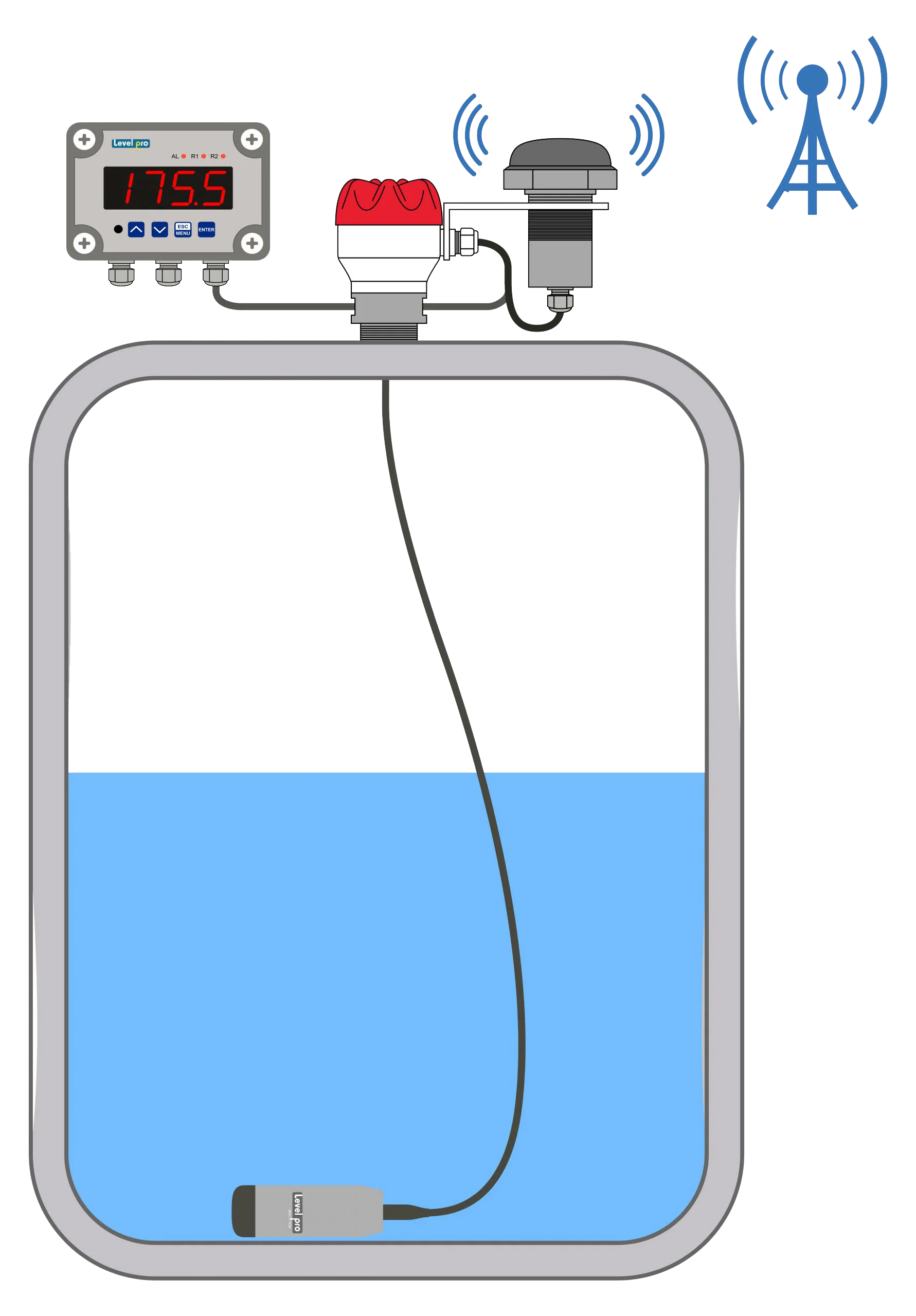Submersible Tank Level Sensor for Bulk Chemicals

Submersible level sensors work by measuring the level of a liquid that they are submerged in. They typically consist of a sensor head and a cable that connects the sensor head to the control system. The sensor head contains the sensing element, which is designed to detect the level of the liquid, and a transmitter that sends the level information to the control system.
There are several types of submersible level sensors, each with their own method of measuring the level of the liquid. Some of the most common types include:
- Hydrostatic pressure sensors: These sensors measure the hydrostatic pressure of the liquid, which is the pressure exerted by the weight of the liquid. The sensor head contains a pressure transducer that converts the hydrostatic pressure into an electrical signal that is sent to the control system. Hydrostatic pressure sensors are highly accurate and are suitable for applications where a high level of precision is required.
- Float sensors: These sensors use a float that rises and falls with the level of the liquid. As the float moves up and down, it activates a switch or sends a signal to the control system. Float sensors are simple and inexpensive, and they are suitable for applications where a low level of precision is required.
- Optical sensors: These sensors use a light source and a detector to measure the level of the liquid. As the liquid level rises and falls, the light is reflected off the surface of the liquid and is detected by the sensor. Optical sensors are highly accurate and are suitable for applications where a high level of precision is required.
Submersible level sensors are the best choice for bulk chemical applications because they are designed to be immersed in liquid and can withstand the harsh conditions that are commonly found in these applications. They are typically made of materials that are resistant to corrosion and can withstand high temperatures, which makes them well-suited for use in chemical storage tanks, process vessels, and other equipment that is exposed to harsh chemicals. They are also easy to install, and they can be used to measure the level of a wide variety of chemicals, including acids, bases, and solvents.
In summary, Submersible level sensors are devices that measure the level of a liquid by being submerged in it. They typically consist of a sensor head and a cable that connects the sensor head to the control system. They are the best choice for bulk chemical applications because they are designed to be immersed in liquid and can withstand the harsh conditions that are commonly found in these applications, they can be used to measure the level of a wide variety of chemicals, including acids, bases, and solvents and are easy to install.
Learn more about level sensors
Please contact us to discuss your application


